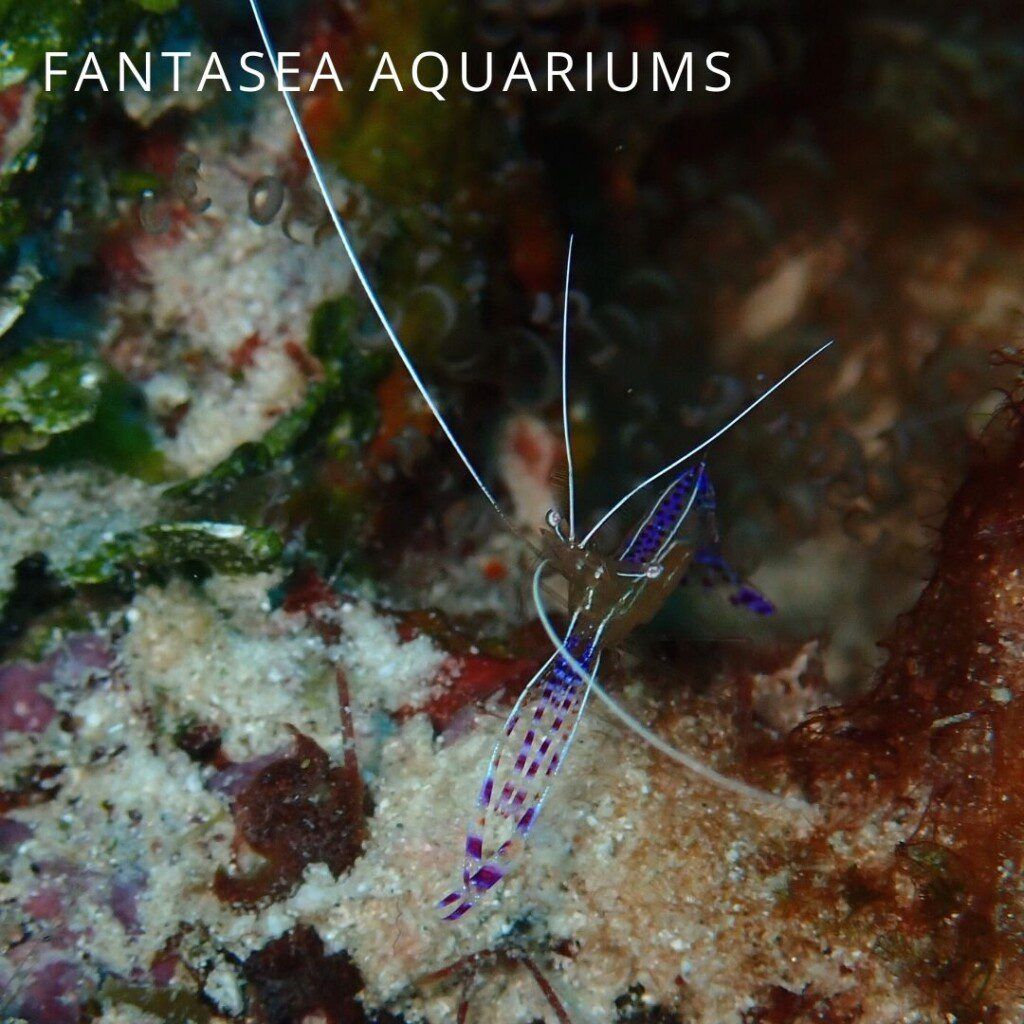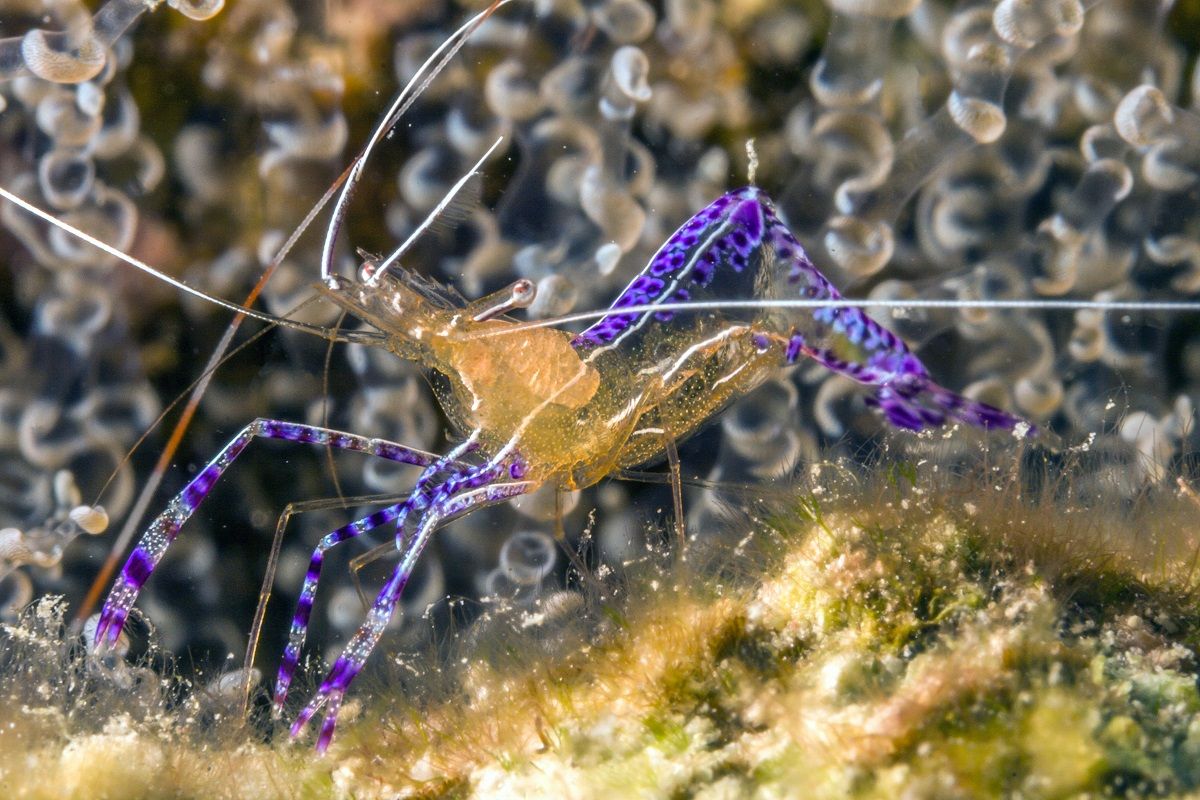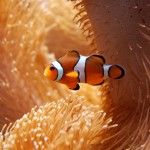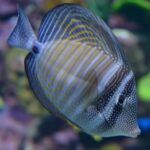Looking for an uncommon invertebrate to add to your reef aquarium? We’ve got just the shrimp for you! The Pederson cleaner shrimp (Ancylomenes pedersoni) isn’t nearly as popular in the aquarium trade as some other shrimp species, but it’s actually a fascinating choice and can make a great addition to peaceful reef set-ups.
Keep reading to find out everything you need to know about the Pederson cleaner shrimp and keeping this Caribbean species in the aquarium!
| Name (Common, Scientific) | Pederson(‘s) cleaner shrimp, Caribbean anemone shrimp, Ancylomenes pedersoni (previously Periclimenes pedersoni) |
| Minimum tank size | 5 gallons |
| Minimum group size | 2 |
| Temperature | 72-78 °F |
| Salinity | 1.021-1.025 |
| pH | 8.1-8.4 |
| Difficulty level | Easy |
Pederson cleaner shrimp description & natural habitat
Description
The Pederson cleaner shrimp is a small and mostly transparent species with a maximum size of only around 1″. It’s easy to recognize, sporting elongated purple-banded front claws and a blueish-purple dotted pattern on its humped back.
This cleaner shrimp also has long white antennae, which it waves about in order to attract the attention of potential “clients” in need of a cleaning session. Males are smaller than females.
Natural habitat
This shrimp is naturally found in the Caribbean Sea, like around Bermuda and the Dutch Caribbean. It usually inhabits shallow reefs with a depth between around 1-15 meters (3-49 ft), although it has been spotted down to 52 m (170 ft).
In its natural range, similar to clownfish, this shrimp maintains a symbiotic relationship with anemones. The anemone protects the shrimp, while at the same time obtaining a source of nitrogen from its waste and receiving free cleanings. It’s a pretty fascinating natural collaboration!
Bartholomea annulata or corkscrew anemones are preferred, but Pederson cleaner shrimp are also seen on Condylactis gigantea (the giant Caribbean anemone) and a few others.
They occasionally have to share their hosts with fellow Pederson shrimp, which results in pretty complex social relationships dominated by larger females, which take up the best spots. The species is also sometimes seen living alongside the closely related spotted cleaner shrimp, Periclimenes yucatanicus.
Shrimp will sometimes switch between hosts, especially juveniles and the smaller males. Interestingly, if they go without a host for too long, they will lose their immunity to the stinging tentacles.
As a result, they have to reacclimate by pressing portions of their body against the anemone. This doesn’t happen often, though, because the anemone is an important source of protection. Some fish will try to eat Pederson cleaner shrimp that stray too far from their “home”.
Pederson cleaner shrimp behavior
Let’s take a moment to explore the Pederson cleaner shrimp’s cleaning behavior. Scientists have studied these shrimp pretty extensively, which isn’t surprising given how unique and interesting their behavior is. You’ll even be able to observe some of it in your aquarium!
It all starts with the waving of those long white antennae at potential clients, especially by larger females. Interested fish will come up and may flash a darker color on their body to indicate their interest.
Responding to this signaling, the shrimp will come up and remove ectoparasites or dead bits of skin from its body, especially the gills and mouth. Research has shown them to be pretty efficient at removing small parasitic isopods from their clients, for example, helping to keep the reef healthy.
Here are some fun facts that scientists observed about this cleaner shrimp while studying it in the US Virgin Islands:
- The shrimp clean a wide variety of different fish species.
- Most cleaning sessions lasted less than 20 seconds.
- They cleaned surgeonfish most often, but groupers and lizardfish received the longest sessions.
- The amount and length of cleaning sessions per anemone would increase if there were more shrimp present.
- Some fish would chase other fish away from the shrimps’ cleaning stations.
Additionally, it was shown that since the shrimp are so small, most clients are initially attracted to the anemone. Larger anemones would receive more traffic.
Did you know? Although Pederson cleaner shrimp are naturally transparent, they can temporarily turn opaque when stressed.

Pederson cleaner shrimp aquarium
Keeping Pederson cleaner shrimp in the aquarium is not too much of a challenge, and they’re a suitable choice for beginning aquarists. They also make a great option for nano tanks, as they stay small and are pretty forgiving when it comes to water values. Normal reef parameters should be fine for them.
It’s not absolutely necessary to give your shrimp an anemone host, which comes in handy because anemones can be a bit difficult to keep alive. What is important are plenty of hiding places like rock crevices, overhangs and caves.
Pederson cleaner shrimp compatibility
This shrimp is a fantastic choice if you’re looking for a 100% peaceful and reef-safe addition to your tank. The species isn’t interested in corals and will leave its tankmates alone, interacting only to clean them.
Of course, you should avoid any fish that may eat your Pederson cleaner shrimp, as some of the larger predatory species may not always honor their status as cleaners in the aquarium. Your safest option would be other invertebrates, like different shrimp species.
When it comes to their own species, Pederson cleaner shrimp are pretty good neighbors as well. In the wild they’re spotted both alone and in groups, but we recommend keeping at least a pair in order to really be able to observe their interesting behavior.
If you keep a larger group, you’ll notice that these shrimp don’t fight amongst themselves and aren’t really territorial. This being said, larger females will take up the better spots on their host and might shoo away smaller individuals.
Did you know? Pederson cleaner shrimp may receive competition from small cleaner gobies like the sharknose goby. True to form, they deal with this issue peacefully by just cleaning clients at the same time as the gobies.
Pederson cleaner shrimp diet
One nice thing about Pederson cleaner shrimp is that although they’re a cleaner species, they will also accept other foods and don’t mind scavenging. This makes them a lot easier to keep than something like the popular blue-streak cleaner wrasse, which hasn’t evolved to adapt to other food sources and can starve to death in the aquarium.
Between cleaning their tankmates and eating detritus, a Pederson shrimp should be able to find most of its food itself. This doesn’t mean they don’t need supplemental feedings at all, though, especially in smaller and very clean tanks.
To make sure your Pedersons don’t go hungry, you can offer small sinking foods a few times a week. These shrimp are mostly carnivorous, so you could go for sinking carnivore tablets, frozen foods or sinking flakes. Keeping your shrimp well-fed helps ensure they can molt properly and live to their maximum lifespans.
Breeding Pederson cleaner shrimp
The Pederson cleaner shrimp isn’t very long-lived, usually lasting less than two years. Unfortunately, it’s not the easiest to breed in the aquarium either. The shrimp reach sexual maturity at around 6 months and mate after the female molts.
The eggs hatch in 2-3 weeks and the shrimp are born as larvae. This is what makes things difficult: the larvae are planktonic. They’re so small that they’re easily eaten by other aquarium fish or sucked into the filter. A few may make it if you set-up a dedicated rearing tank and are able to feed them plankton multiple times a day. Still, it’s not worth the work for most folks!
Conclusion
Will you keep your Pederson cleaner shrimp in a nano tank or as part of a bigger reef aquarium? Will you provide them with an anemone or not?
If you don’t feel like thinking about questions like these yourself, we can help! FantaSEA Aquariums can design, set up and maintain your aquarium for you, so all you have to do is enjoy it. You can contact us here with your ideas.
Colin, P. L. (1988). Marine invertebrates and plants of the living reef. TFH Publications.





